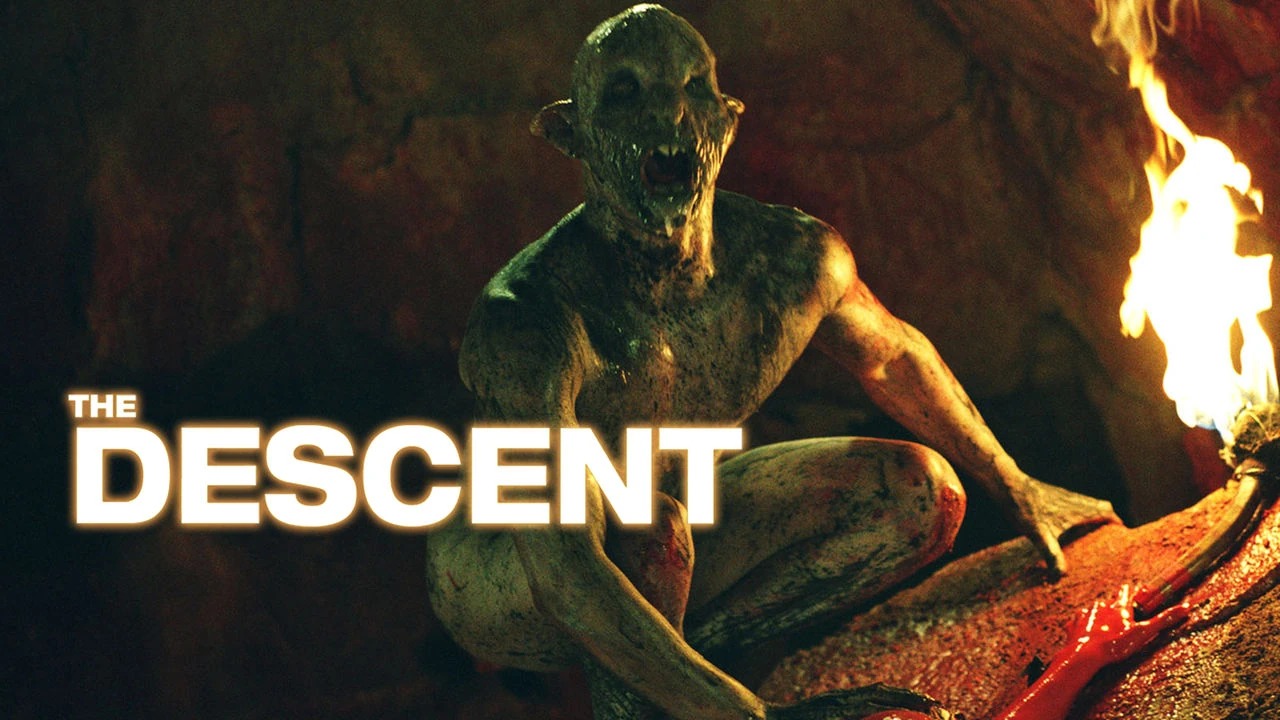The Descent (2005)

The Descent, directed by Neil Marshall and released in 2005, stands as a significant entry in the horror genre, renowned for its intense atmosphere, psychological depth, and claustrophobic dread. This British horror film distinguishes itself not only through its gripping narrative and terrifying creatures but also by its exploration of the darker aspects of human nature and survival.
The film begins with a traumatic event: Sarah Carter (played by Shauna Macdonald) loses her husband and daughter in a tragic car accident. To cope with her grief and to rekindle old friendships, Sarah joins a group of women on an adventurous caving expedition in the Appalachian Mountains. The group, consisting of Sarah and her friends Juno (Natalie Mendoza), Beth (Alex Reid), Rebecca (Saskia Mulder), Sam (MyAnna Buring), and Holly (Nicolaj Coster-Waldau), embarks on what they hope will be a healing journey through a previously unexplored cave system.
The expedition takes a dark turn when the group becomes trapped in the labyrinthine caverns. Their situation worsens when they discover that they are not alone in the cave. The darkness conceals a race of blind, subterranean humanoid creatures known as “Crawlers,” who are hostile and predatory. As the group fights to find a way out, they must contend with the terrifying creatures and their own inner demons.
One of the most striking aspects of The Descent is its masterful use of claustrophobic settings to heighten tension and fear. Neil Marshall creates an oppressive and suffocating atmosphere through tight, confined spaces and dim lighting. The cave’s narrow tunnels and steep drops amplify the sense of entrapment and helplessness, immersing the audience in the characters’ terror and isolation.
Marshall’s direction ensures that every creak of the cave and every shadow becomes a potential threat. The use of practical effects and limited lighting enhances the authenticity of the setting and the fear it evokes. The sense of claustrophobia is not only physical but psychological, as the characters’ isolation becomes a breeding ground for distrust and paranoia.

The film’s strength lies not just in its scares but also in its well-developed characters. The group of friends is portrayed with depth, allowing their individual fears and motivations to surface as the story progresses. Sarah’s grief and trauma from her family’s loss become a central theme, influencing her decisions and interactions throughout the film.
The dynamics within the group also add layers of tension. Juno’s leadership and her hidden secrets create friction among the group, leading to conflicts that are exacerbated by their dire circumstances. This internal strife mirrors the external threat posed by the Crawlers, illustrating how fear and stress can fracture relationships and push individuals to their limits.

The Descent delves into themes of survival, both in terms of physical and psychological endurance. The cave becomes a crucible that tests the characters’ resilience and moral compass. As the group faces the Crawlers and their own deteriorating sanity, they are forced to confront their deepest fears and darkest instincts.
The film also explores the idea of the monstrous within. The Crawlers, while terrifying, are contrasted with the characters’ own descent into violence and betrayal. The line between predator and prey blurs as the characters become increasingly desperate, highlighting the primal nature of human survival and the capacity for savagery when pushed to extremes.

The film’s visual and auditory elements contribute significantly to its overall impact. The cinematography, by Sam McCurdy, employs a combination of close-ups and wide shots to emphasize the claustrophobic environment and the sense of being hunted. The use of shadows and darkness enhances the fear of the unknown, while the minimalistic lighting adds to the suspense.
The sound design, including the eerie score by David Julyan, further amplifies the film’s tension. The creaking of the cave, the growls of the Crawlers, and the characters’ heavy breathing all contribute to the immersive horror experience.

The Descent is a masterclass in horror filmmaking, blending psychological depth with visceral scares to create a compelling and terrifying experience. Neil Marshall’s direction, coupled with strong performances and effective use of setting and sound, makes the film a standout in the genre. Its exploration of claustrophobia, survival, and human nature ensures that The Descent remains a thought-provoking and memorable entry in the world of horror cinema.











